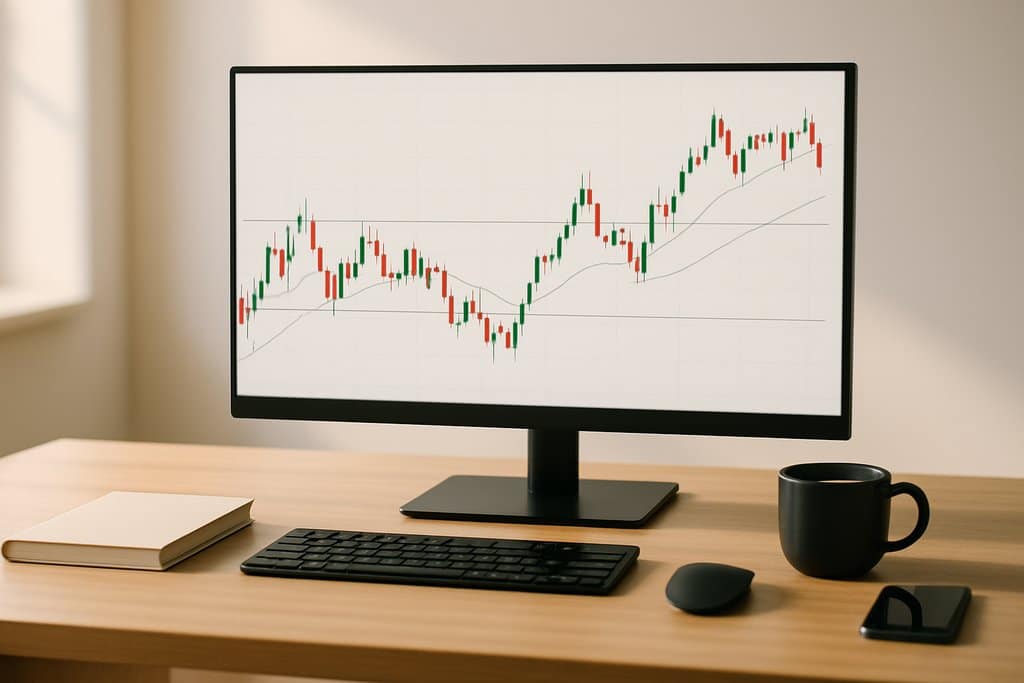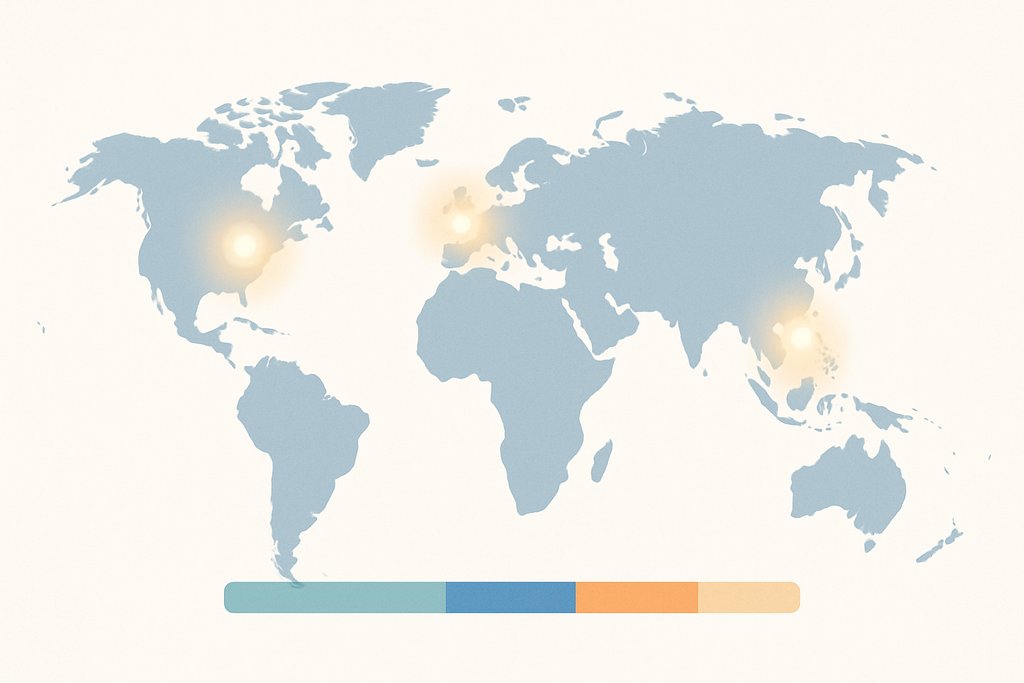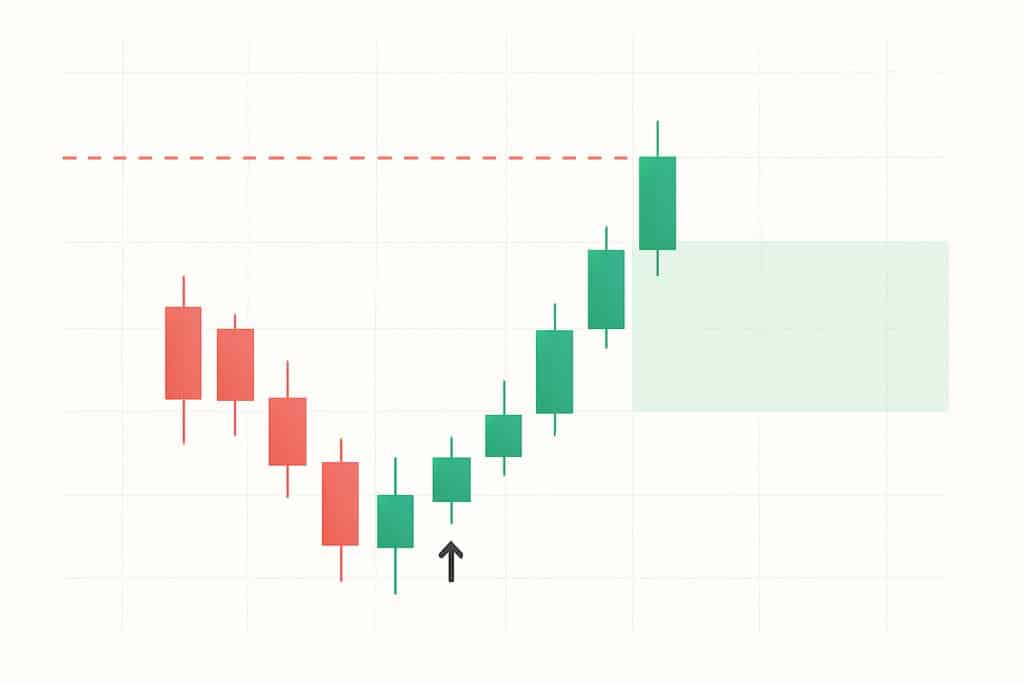Day Trading Forex: Strategies, Setups & Daily Workflow
Learn a focused approach to day trading forex with clear intraday setups, disciplined risk management, and automation that turns ideas into real trades.

What you’ll learn
- How to focus on liquid pairs and active sessions
- Repeatable intraday strategies with clear rules
- Risk sizing, stops, and trade management
- Automation to enforce discipline and speed
What is day trading forex and why it is different
Day trading forex is opening and closing positions within the same day to capture intraday moves without holding overnight. The market runs 24 hours across global sessions, so you can align your trading window with your schedule and volatility preference. Major pairs like EUR/USD, GBP/USD, and USD/JPY usually offer the best liquidity and tightest spreads, which is essential when entries and exits are frequent. If you need a primer on how the currency market works, start there.
Because forex is decentralized and highly liquid, price discovery is continuous with fewer gaps than equities. That does not make it easier. Leverage amplifies outcomes, news can reprice pairs in seconds, and spreads can widen in illiquid moments. Success depends on timing, risk control, and consistent execution rather than prediction.
For background and market structure, see Investopedia’s forex overview and Wikipedia’s foreign exchange market page.
How day trading the currency market works in practice
Intraday forex trading revolves around three pillars: timing the sessions, understanding drivers, and managing execution quality.
Timing the sessions. Align activity with periods that deliver usable volatility. The London open and the London to New York overlap often produce the best action for EUR and GBP pairs. Tokyo hours tend to be more technical on JPY and AUD pairs, with cleaner ranges and breakouts.
Drivers. Scheduled catalysts include CPI, NFP, PMI, and central bank decisions. Unscheduled drivers include political headlines and risk sentiment shifts. Know which events matter for each pair and either trade them with a plan or stay flat.
Execution quality. Edge depends on spread, slippage, and order types. If targets are 10 to 25 pips, a wide spread erodes results fast. Learn to use limit, stop, and market orders appropriately. For a refresher, see Investopedia on bid-ask spread.

Strategies that fit day trading forex
Durable intraday strategies define a setup window, specify exact entries and exits, and respect risk limits. Below are four archetypes to tailor to your preferences.
Momentum breakout at session opens
Watch for a break of the Asian or pre-London range with follow-through in the first 60 to 120 minutes of London. Many traders wait for a 5 or 15 minute close beyond the range, then enter in the direction of the break with a stop beyond the opposite side. A macro catalyst or higher time frame trend can improve odds.
Mean reversion in ranges
When price oscillates between well defined intraday levels like VWAP, prior day high or low, or a daily pivot, fade moves near range extremes and aim for rotation toward the middle. Keep stops tight and invalidation clear to avoid getting caught in true breakouts.
Trend pullback with higher time frame alignment
Align a 5 or 15 minute chart with a 1 hour trend. If the 1 hour is up and volatility is supportive, buy pullbacks to moving averages, prior structure, or a dynamic indicator like Supertrend or anchored VWAP, with stops below the last swing. This can reduce whipsaw compared to chasing breakouts.
News volatility capture
During major releases, spreads widen and volatility spikes. One approach is to wait for the first impulse, then trade the secondary move once spreads normalize and direction is clearer. Another is a predefined scalp with small risk and time based exits. Automation helps enforce rules and avoid impulsive mistakes.
Risk management for day trading forex
Risk control is the business. Your edge can be small, but consistent risk management keeps you in the game.
Position sizing. Many intraday traders risk 0.25 percent to 0.75 percent per idea. Convert account risk into lot size using stop distance so that a typical loss equals the chosen fraction of equity.
Stop placement. Structure based stops sit beyond the last swing or outside a well defined range. Volatility based stops use a multiple of ATR to avoid routine noise. Apply one method consistently and ensure targets justify the stop.
Expectancy over win rate. A 45 percent win rate can be strong if average winners exceed average losers. Take profits at logical levels and cut losers fast.
Correlation. Consider total exposure. Long EUR/USD and long GBP/USD both express USD weakness. Avoid stacking correlated positions unintentionally.
Tools, workflow, and automation that improve execution
A robust workflow separates improvisation from professionalism. Build a daily plan, a watchlist, alerts at key levels, and clear rules that prevent overtrading. Automation is a force multiplier in a market that rewards speed and discipline.
Obside is a financial automation platform that turns your trading ideas into instant market actions. Describe your rule in plain language to Obside Copilot, backtest it in seconds, then execute live with connected brokers and exchanges. This reduces errors, enforces your plan, and reacts to news or technical signals in real time.

- Alert if RSI crosses 70 on EUR/USD and MACD turns bearish on the 5 minute chart.
- Short EUR/USD on a close below London low with volume above 20 day average; stop 1.2 ATR, partial at 1R, trail at 2 ATR.
- Close all intraday positions by 20:45 UTC to avoid rollover risk.
Validate in seconds with fast backtests, then deploy with live execution. Explore the platform at beta.obside.com or start at beta.obside.com/register.
For scheduled events like Nonfarm Payrolls or CPI, consult official calendars. The U.S. Bureau of Labor Statistics posts employment releases at bls.gov.
Step by step: a practical plan to start day trading forex
Start with one pair and one session
Pick a liquid major that fits your time zone. EUR/USD during the London to New York overlap is a common choice. Focusing on one pair and window reduces variables and accelerates learning.
Define one setup with exact rules
Example: a London breakout on a 5 minute chart. Draw the Asian session high and low, wait for a 5 minute close above the high, enter on a small pullback or at market, place the stop at the opposite side of the Asian range or at 1.3 ATR, take partial at 1R and trail for 2R.

Backtest and forward test
Collect 50 to 100 historical trades to estimate expectancy, drawdown, and spread sensitivity. Then forward test in a demo or with tiny size for two to four weeks. Adjust only what the data proves is broken. Use forex backtesting to quantify results before going live.
Automate alerts and guardrails
Create alerts for the Asian range break and for macro days like ECB or FOMC. Add rules so entries, stops, and exits fire without hesitation, and a daily stop that halts trading after a set loss or trade count. Learn more about trading automation to enforce discipline.
Scale carefully
If the plan is stable, increase risk per trade gradually from 0.25 percent to 0.5 percent. As size grows, recheck slippage and spread sensitivity. Add a second setup only after the first remains consistent.
Review weekly
Log every trade with context. Did you follow plan or deviate? Are big losers avoidable, and do winners reach targets? Use the review to refine rules, then update your Obside automations so improvements stick.
Two concrete intraday examples
Before London, mark the Asian session high and low. As London opens, watch for a 5 minute close beyond the high with above average volume. Enter on the next candle if price does not snap back into the range. Place a stop just below the Asian low or use 1.2 ATR. Take partial at 1R and trail with a 2 ATR stop to capture extension into the New York overlap. Use an Obside alert to trigger execution with predefined stops and targets.
During Tokyo hours, USD/JPY often respects defined ranges when news is light. Identify the prior day’s value area and intraday VWAP. Fade stretches of about 1 ATR beyond VWAP into prior resistance or support, with small risk and quick targets back to VWAP. Set rules in Obside to halt trading if a high impact Japan or U.S. announcement is due, then resume once spreads normalize.
Benefits and considerations of day trading forex
Benefits. Liquidity and around the clock access let you trade when you are most focused. Tight spreads on majors support strategies that rely on small but frequent profits. The market responds to both technical levels and macro news, allowing specialization across momentum, mean reversion, or trend continuation.
Considerations. Psychological pressure can build when decisions arrive every few minutes. Overtrading can erase a good week in one session. Costs matter at intraday cadence, and small slippage or widening spreads can flip an edge. The solution is a repeatable plan, discipline, and processes that remove guesswork. Automation through Obside helps enforce rules and keep execution consistent.
Conclusion: your next steps to trade forex intraday with structure
Pick one pair and session, define a simple rules based setup, size positions by risk rather than hope, and automate everything you can. Backtest first, forward test patiently, then deploy with discipline. Build guards that stop you trading around dangerous events or after a daily loss limit. Let data guide your adjustments, not emotion.
To put this into practice without building tools yourself, open Obside, describe your setup to Obside Copilot, and let the platform convert it into alerts, orders, stops, and exits. Validate with ultra fast backtesting, connect your broker, and trade your plan instead of your mood.
Prefer to explore first and see how Obside moves ideas to execution in seconds? Visit the website to learn more.
FAQ: Day Trading Forex
What is the best time of day to trade forex intraday?
The London session and the London to New York overlap usually offer the best combination of liquidity and volatility for EUR and GBP pairs. USD/JPY and AUD pairs can present good opportunities during Tokyo hours. Test your setup across sessions and stick to the window that delivers stable results.
How much capital do I need to start day trading forex?
There is no single number. What matters is using small risk per trade, often 0.25 percent to 0.5 percent of your account. With disciplined sizing and realistic targets, you can build consistency from a modest base. Focus on process first, then scale.
Which currency pairs are best for day trading?
Majors like EUR/USD, GBP/USD, and USD/JPY generally offer the tightest spreads and deepest liquidity, which helps intraday execution. Crosses can move more but often have wider spreads and jumpier behavior. Start with majors, then expand once your process is stable.
What indicators work well for day trading the currency market?
Price action, levels, and a small set of indicators used with intent can be effective. RSI and MACD can confirm momentum, ATR can size stops based on recent volatility, and VWAP or Supertrend can help define structure. Consistency and testing matter more than indicator count.
Can I automate my day trading forex strategy without coding?
Yes. Platforms like Obside let you describe rules in plain language and convert them into live alerts and automated orders. You can backtest first, then connect your broker and run your strategy with guardrails for risk and news events.
